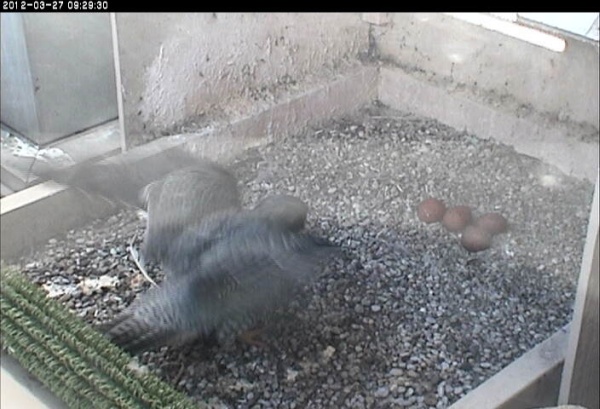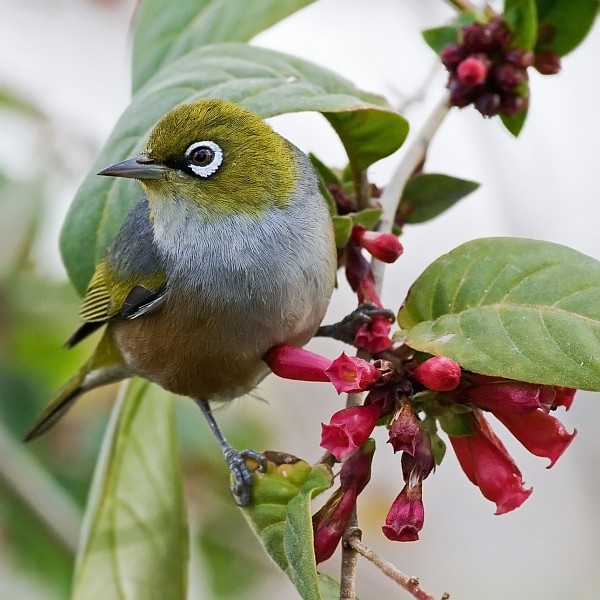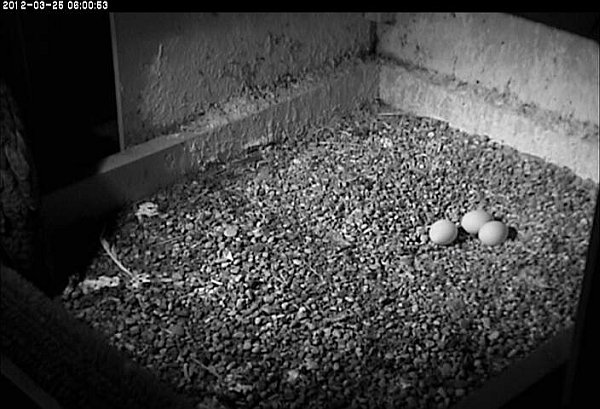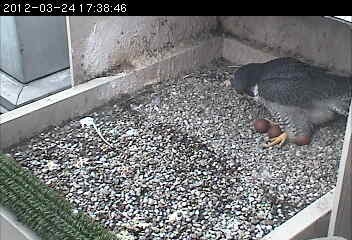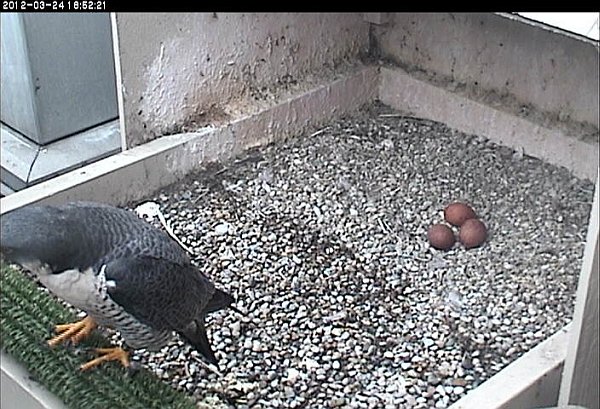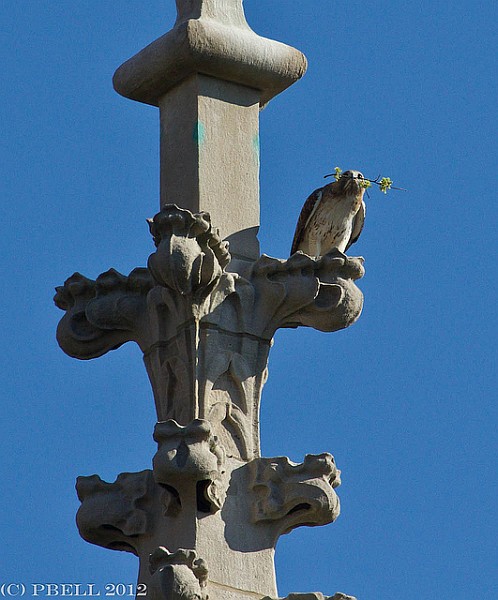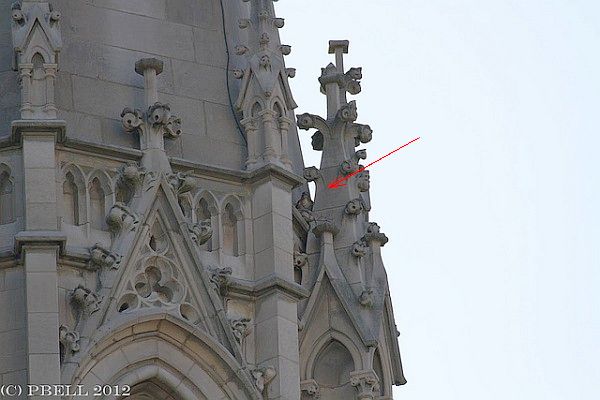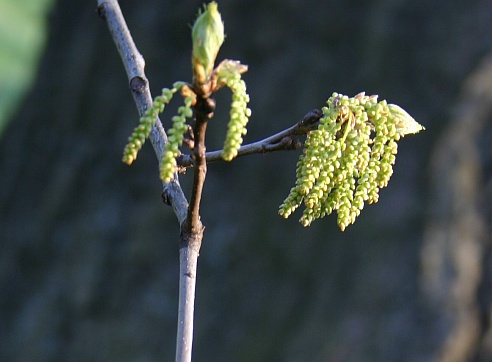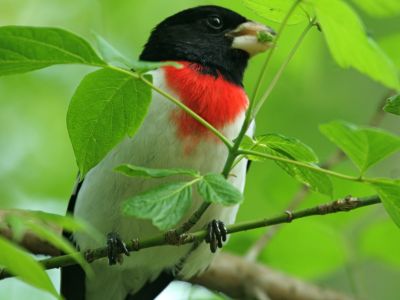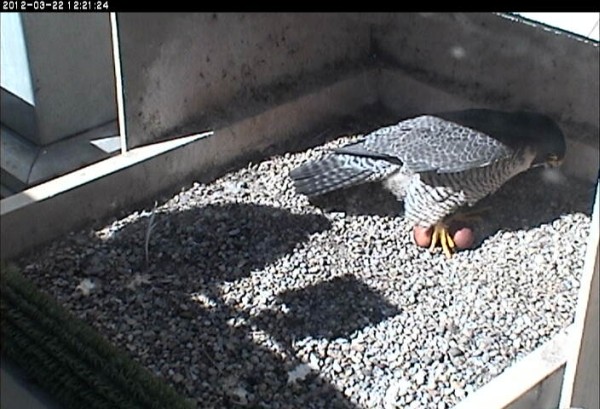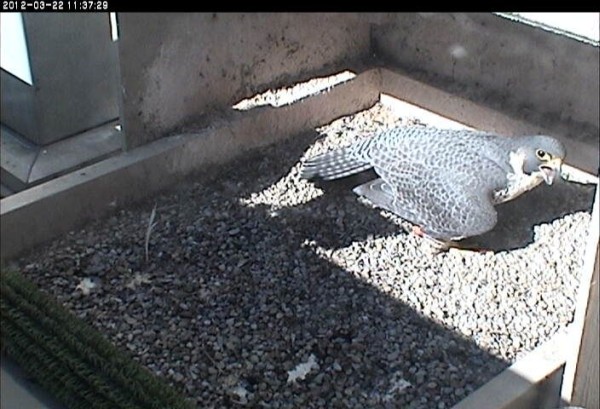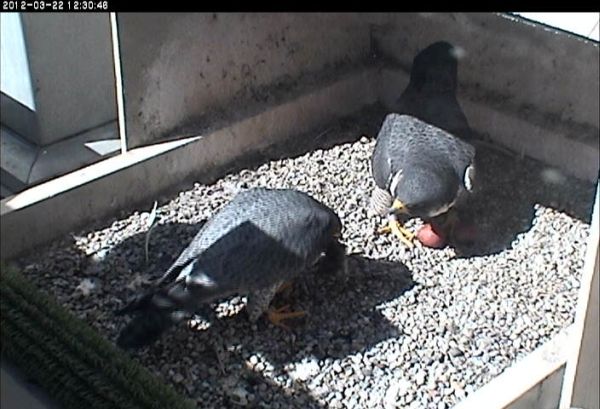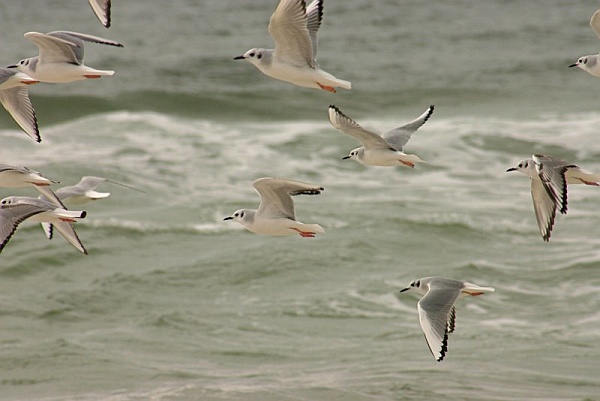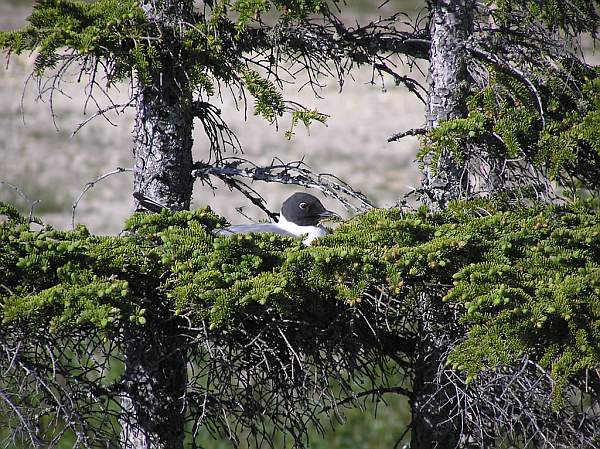
Pittsburgh’s downtown peregrines have not courted at the Gulf Tower nest since March 1. Even then they were largely absent in January and February when they should have been visiting the site more often.
What happened?
Peregrines are extremely faithful to successful nest sites but they will leave if they feel the location is no longer safe for raising their young. In a city, humans walking above them, construction on the floors above or near their nest, or faces peering at them from indoors will send them away.
Construction had been going on at the Gulf Tower until quite recently. Perhaps that’s why the peregrines are missing, though we will never know.
We do know Dori and Louie have not left Pittsburgh. One of them flew past the Gulf Tower yesterday and they’ve been seen on the Monongahela River side of town.
For peregrines, biology rules in March. In our area there’s a three week window when they typically begin laying eggs: March 10 to April 2. By April 2 the first clutch has begun.
So where are Dori and Louie now?
Downtown is their territory. They’re here somewhere.
(photo by Shane Cooper. Click on the photo to see the original.)
